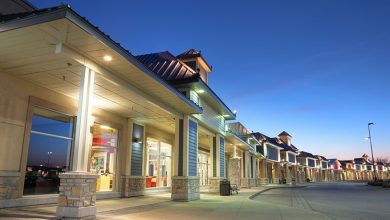The real estate market for co-living properties in the USA

The co-living market in the United States has grown rapidly in recent years, as more and more people look for affordable and flexible housing options. Co-living properties offer a unique solution for renters looking for community and convenience, and they have become increasingly popular among young professionals, students, and other groups who may not have the financial means or desire to own a home.
The co-living concept is relatively new to the United States, but it has already seen significant growth and is expected to continue growing in the coming years. According to a report by CBRE, the co-living market in the United States is projected to reach $5 billion by 2022. This growth is driven by several factors, including a growing demand for affordable housing and a desire for community among renters.
One of the biggest benefits of co-living properties is their affordability. Renters can save money on housing by sharing common spaces, such as kitchens and living rooms, with other tenants. This can make co-living properties a great option for people who are looking for a way to save money on housing costs, such as students and young professionals. Additionally, co-living properties often offer flexible lease terms, which can be attractive to renters who may not want to commit to a long-term lease.
Co-living properties also offer a sense of community that can be hard to find in traditional apartments. Residents of co-living properties often share common spaces, such as kitchens and living rooms, and may participate in organized events and activities. This can be appealing to renters who are looking for a sense of community and connection with their fellow tenants. Additionally, co-living properties often have amenities such as gyms, pools, and other recreational areas that can be used by all residents.
Another trend that is driving the growth of co-living properties is the rise of remote work. As more and more people work from home, they are looking for housing options that offer more flexibility and convenience. Co-living properties can be an attractive option for remote workers, as they often have shared workspaces and other amenities that can make working from home more comfortable.
Despite the growth of co-living properties in the United States, there are still some challenges that the market faces. One of the biggest challenges is the lack of regulation and oversight for co-living properties. Unlike traditional apartments, co-living properties are not subject to the same regulations and oversight, which can make it difficult for renters to know what to expect when they move in. Additionally, there are concerns about the long-term sustainability of co-living properties, as they may not be able to attract enough renters to keep them financially viable.
Despite these challenges, the co-living market in the United States is expected to continue growing in the coming years. As more and more people look for affordable and flexible housing options, co-living properties are likely to become an increasingly popular choice. Additionally, as remote work becomes more common, co-living properties may become even more appealing to renters who are looking for a sense of community and convenience.
In conclusion, co-living properties in the USA are on the rise, as more and more people look for affordable and flexible housing options. Co-living properties offer a unique solution for renters looking for community and convenience, and they have become increasingly popular among young professionals, students, and other groups who may not have the financial means or desire to own a home. The co-living market in the United States is projected to reach $5 billion by 2022, and it is expected to continue growing in the coming years. However, there are still challenges that the market faces such as lack of regulations and oversight, and concerns about long-term sustainability. Despite these challenges, co-living properties are likely to continue to be a popular housing option for renters in the United States. The rising demand for affordable and flexible housing, along with the desire for community and convenience, will likely drive continued growth in the co-living market. Additionally, as remote work becomes more prevalent, co-living properties may become an even more attractive option for renters looking for a balance of privacy and community. While the market still faces challenges, with proper regulations and oversight, the co-living market has the potential to provide a valuable and sustainable housing solution for many renters in the United States.



